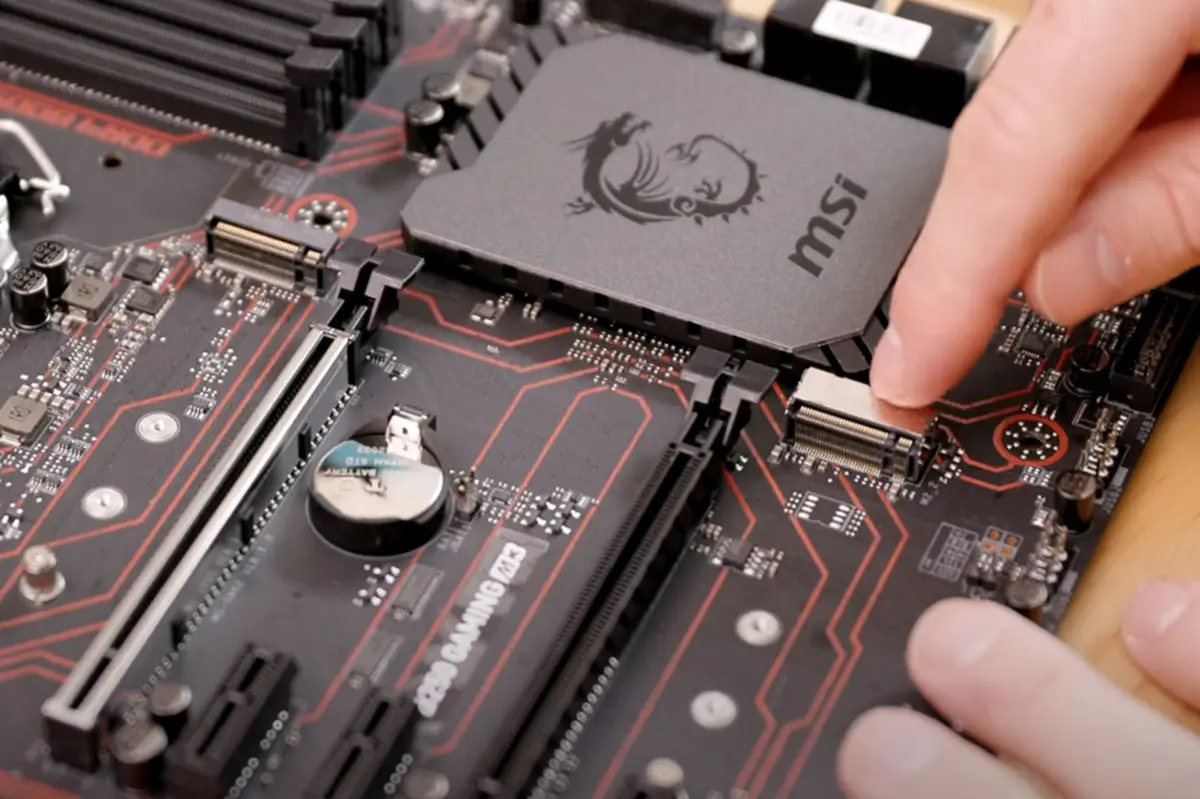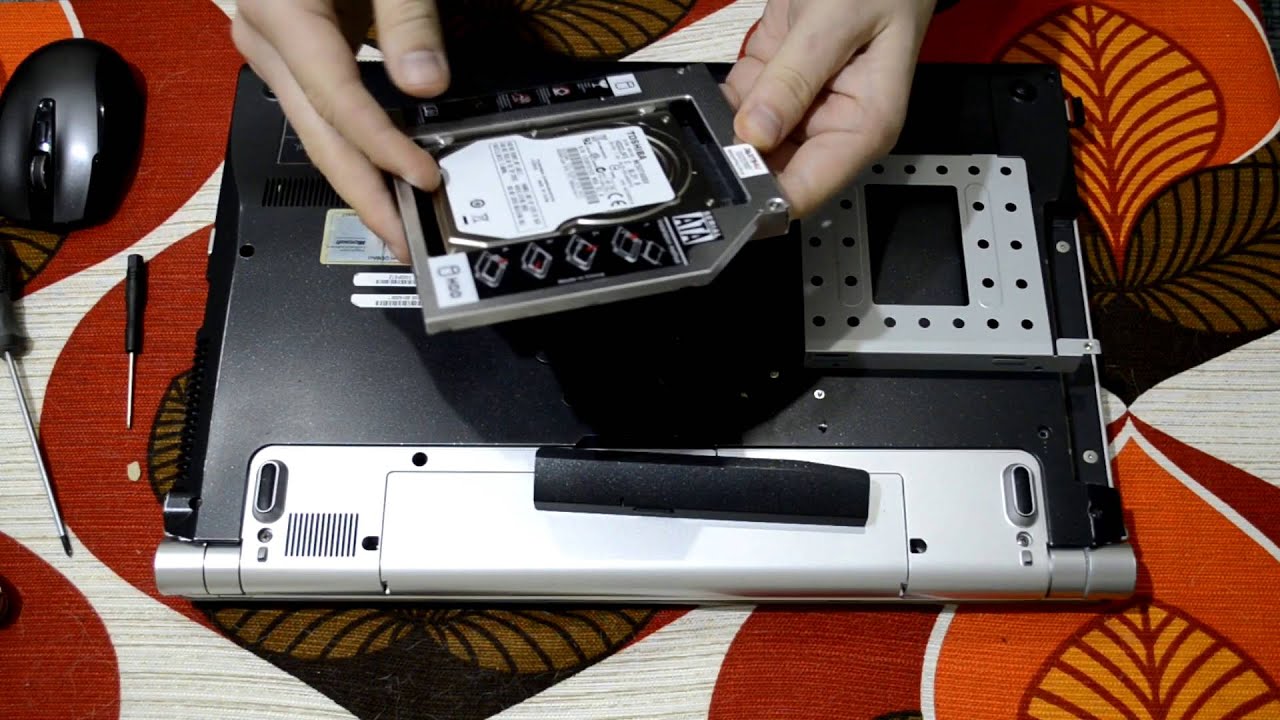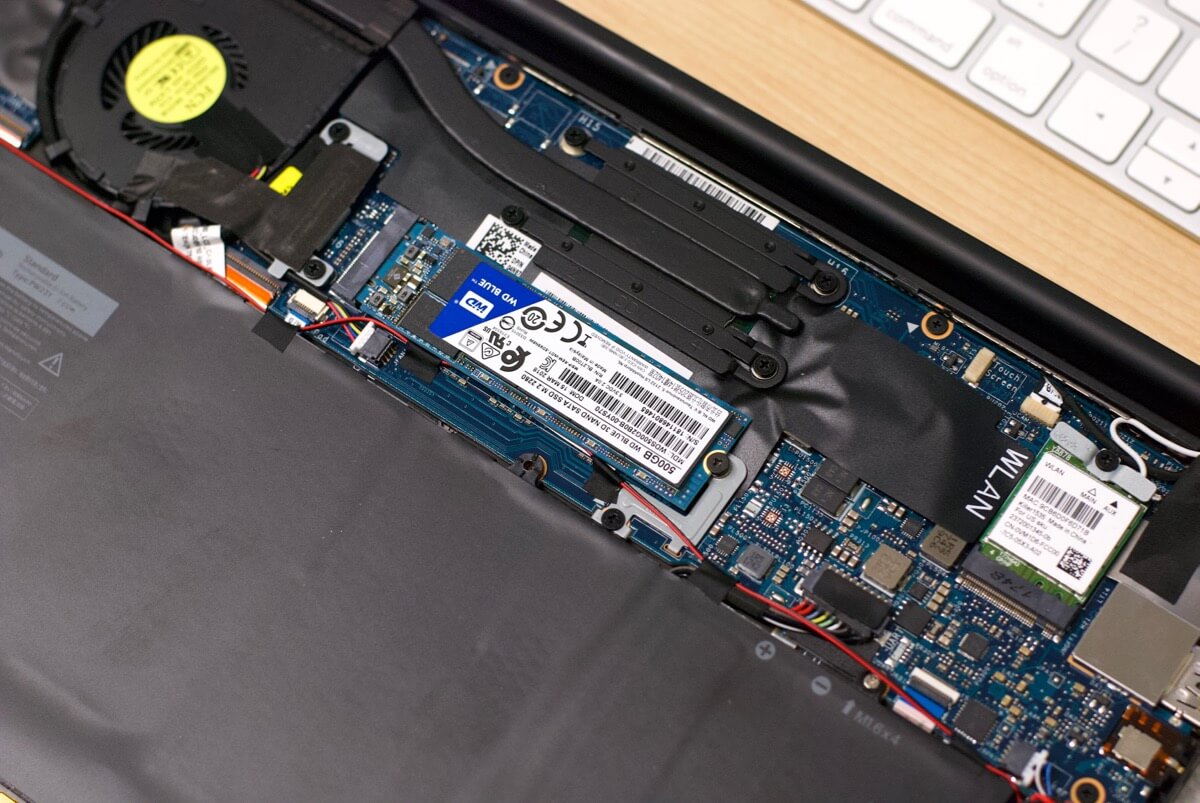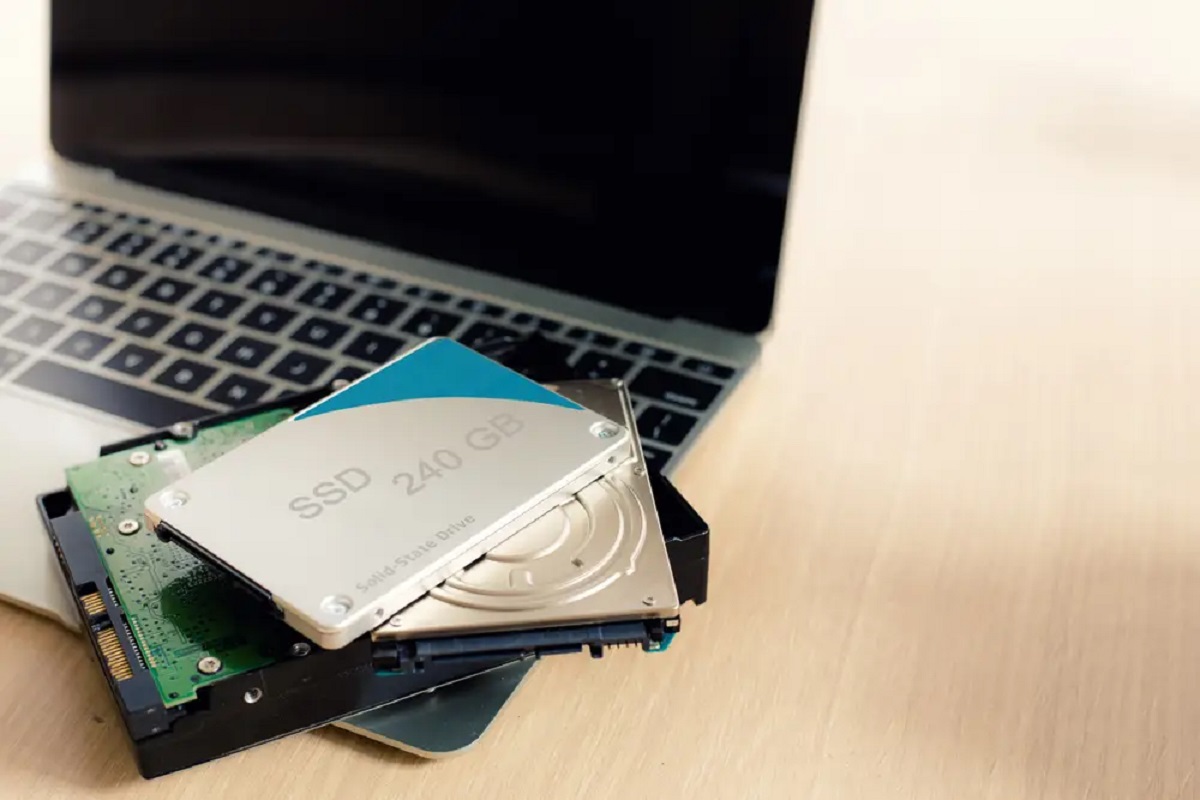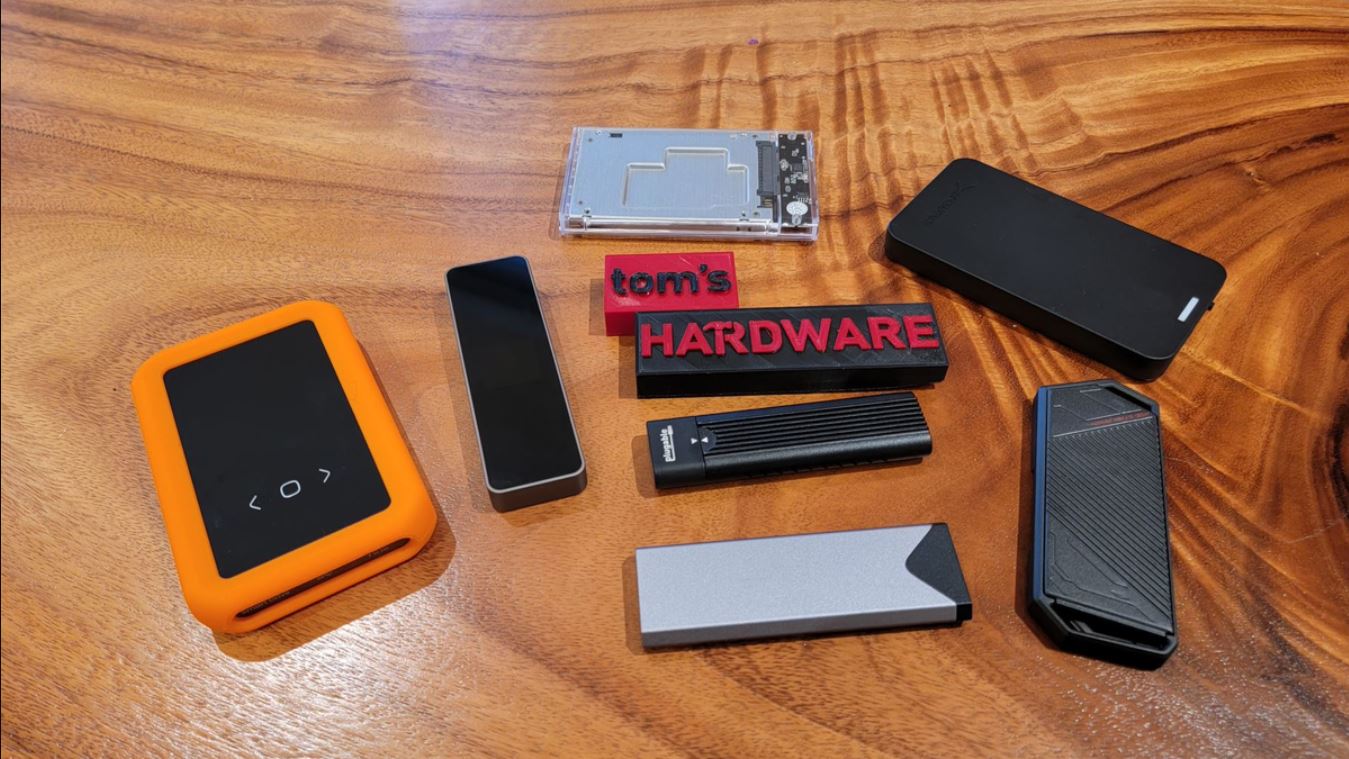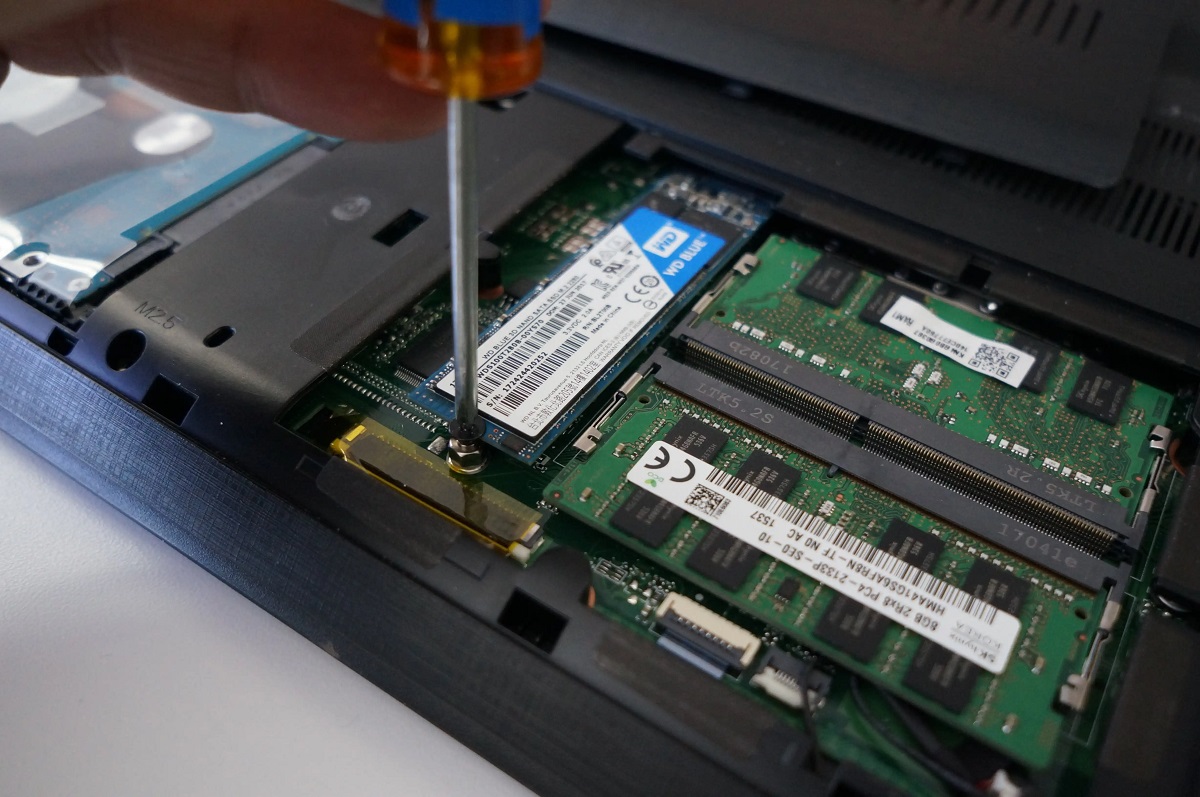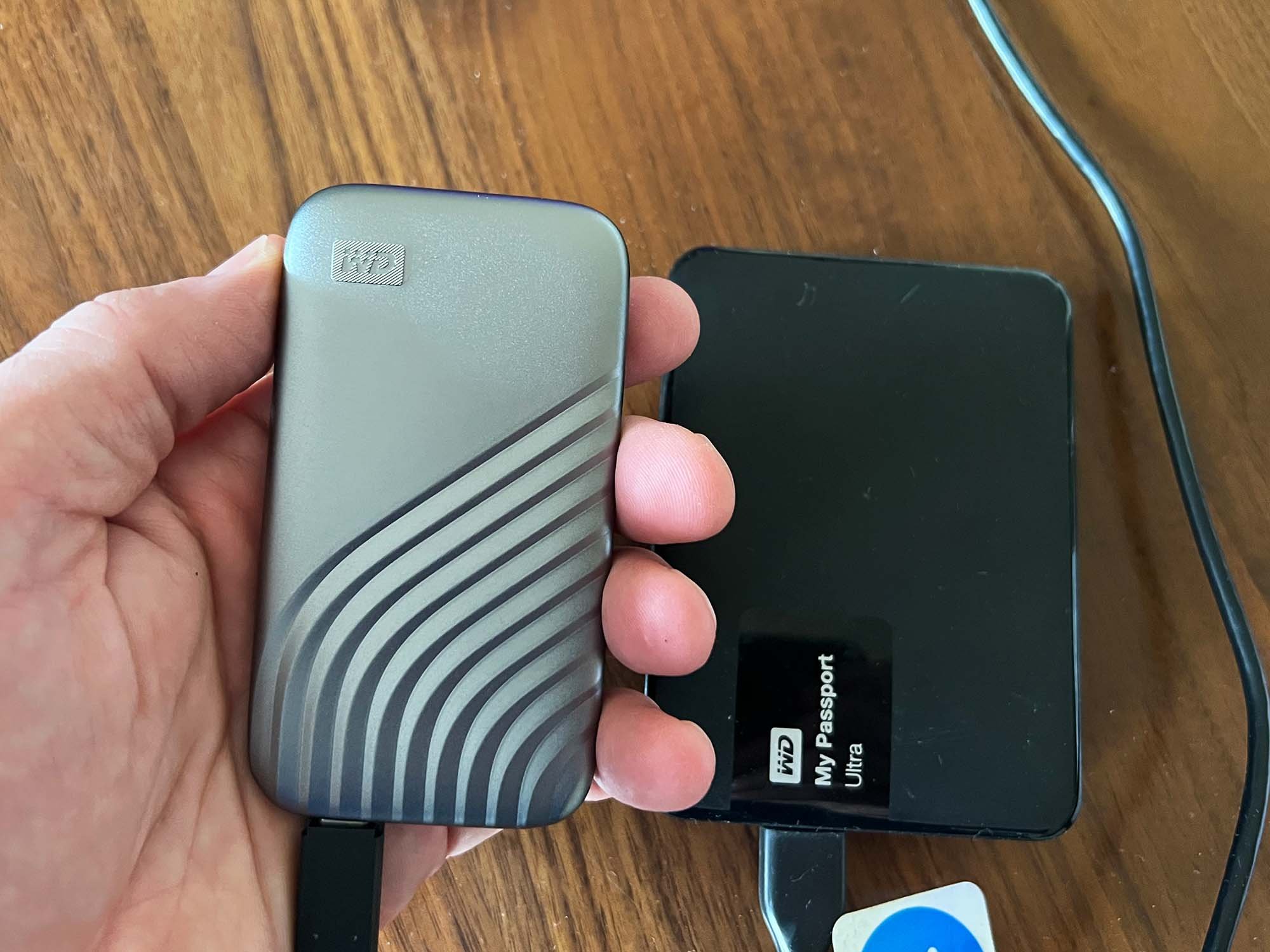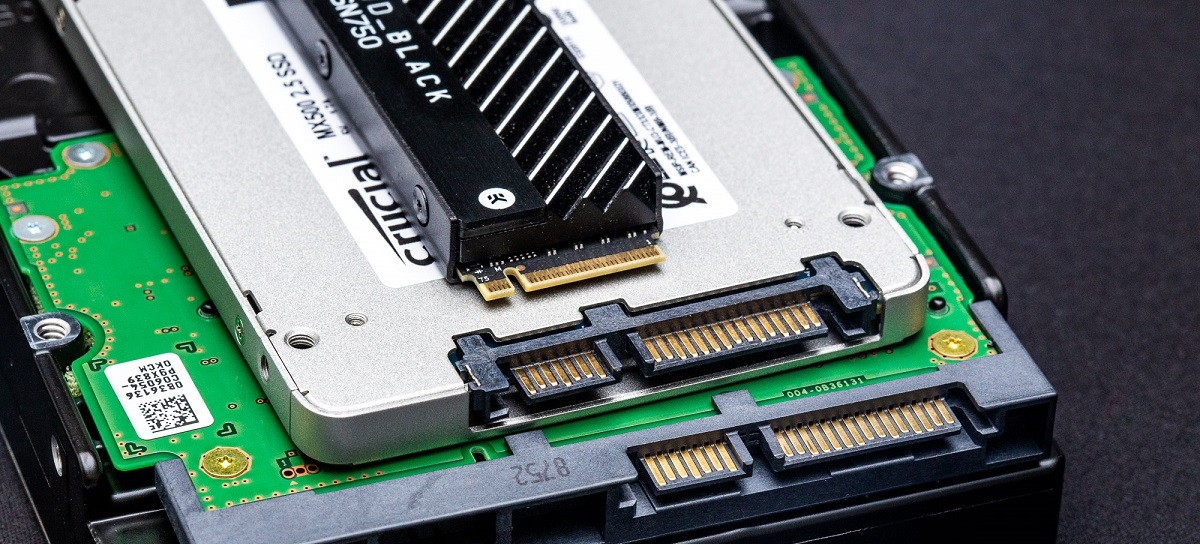Introduction
As technology continues to advance, so does the need for faster and more efficient storage options. One such option that has gained quite a buzz in recent years is the Solid State Drive (SSD). Unlike its traditional counterpart, the Hard Disk Drive (HDD), SSDs do not rely on mechanical components to store and retrieve data. Instead, they use flash memory, making them faster, more durable, and less prone to failure.
The biggest question that arises when investing in an SSD is “Where do I put it?” After all, the placement of the SSD can have a significant impact on both its performance and the overall functionality of your computer or laptop. In this article, we will explore the benefits of using an SSD, discuss the common types of SSDs available, and provide insights into factors to consider when choosing the ideal location for your SSD.
Whether you’re a gaming enthusiast looking to boost load times, a creative professional dealing with large multimedia files, or simply a regular computer user searching for enhanced speed and efficiency, this article will guide you in making the best decision for your storage needs.
Benefits of Using a Solid State Drive (SSD)
Switching to a Solid State Drive (SSD) offers numerous advantages over traditional Hard Disk Drives (HDDs). Understanding these benefits can help you make an informed decision when considering an upgrade. Here are some of the key advantages of using an SSD:
- Lightning-fast Speed: SSDs are renowned for their exceptional speed and responsiveness. With no moving parts, they can access and retrieve data at incredible speeds, resulting in faster boot times, quicker application launches, and reduced file transfer durations. As a result, tasks that used to take minutes can now be completed in a matter of seconds.
- Enhanced Performance: The high-speed data access provided by SSDs brings a noticeable improvement in overall system performance. Whether you’re gaming, handling complex design projects, or running resource-intensive software, an SSD can significantly reduce lag and increase productivity by ensuring that your system can keep up with demanding tasks.
- Reliability and Durability: SSDs do not have the mechanical parts found in HDDs, making them less susceptible to common issues such as read/write head crashes or motor failures. This increased reliability translates into peace of mind, as you can trust your SSD to store and retrieve your valuable data without the risk of sudden failure.
- Energy Efficiency: SSDs are more energy-efficient compared to traditional HDDs. SSDs consume less power, resulting in longer battery life for laptops and reduced energy costs for desktop computers. If you prioritize energy savings or require a longer-lasting battery, investing in an SSD is a wise choice.
- No Noise: Since SSDs lack moving parts, they operate silently. This absence of whirring mechanical noise not only contributes to a more peaceful working environment but also reinforces the durability aspect, minimizing the chances of damage caused by physical shocks or vibration.
- Compact and Lightweight: SSDs are significantly smaller and lighter than their HDD counterparts. This compactness makes them an ideal choice for slim laptops and compact desktop systems where space is at a premium. Additionally, their reduced weight can make a noticeable difference when it comes to portability and ease of transport.
With these benefits in mind, it’s clear why SSDs have become the preferred choice for many users seeking improved performance, reliability, and efficiency in their computing experience. Now, let’s delve deeper into the common types of SSDs available on the market today.
Common Types of Solid State Drives
When it comes to choosing a Solid State Drive (SSD) for your computer or laptop, it’s important to be aware of the different types available. Each type has its own unique features and specifications that can impact its performance and compatibility with your system. Let’s take a closer look at the common types of SSDs:
- SATA SSD: SATA (Serial Advanced Technology Attachment) SSDs are the most commonly used and widely available type of SSD. They connect to the motherboard using the same SATA interface that traditional Hard Disk Drives (HDDs) utilize. While SATA SSDs provide a significant improvement in speed and performance compared to HDDs, their maximum data transfer rate is limited by the SATA interface’s bandwidth.
- PCIe SSD: PCIe (Peripheral Component Interconnect Express) SSDs offer even faster data transfer rates compared to SATA SSDs. They connect directly to the PCIe slots on the motherboard, bypassing the bandwidth limitations of the SATA interface. This makes them an excellent choice for users who require high-speed storage, such as gamers and content creators working with large files.
- M.2 SSD: M.2 SSDs are small, compact storage devices that connect to the motherboard via the M.2 slot. They come in different lengths and widths, supporting various storage capacities and speeds. M.2 SSDs can use either the SATA or PCIe interface, depending on the specific model. This versatility and compact design make M.2 SSDs popular in slim laptops and compact desktop systems.
- NVMe SSD: NVMe (Non-Volatile Memory Express) SSDs are a type of SSD that utilizes the PCIe interface. NVMe technology offers significantly faster data transfer rates and lower latency compared to SATA-based SSDs. These drives are designed to take full advantage of the high-speed capabilities of PCIe connectivity, making them an excellent choice for users who demand top-tier performance.
- External SSD: External SSDs are portable storage devices that connect to your computer or laptop via USB or Thunderbolt ports. They offer the flexibility of easily transferring and accessing data on different devices. External SSDs are particularly useful for users who need to carry large amounts of data, such as photographers, videographers, and professionals working in remote locations.
Choosing the right type of SSD depends on your specific requirements, system compatibility, and budget. Now that we’re familiar with the different types of SSDs, let’s explore the factors to consider when selecting the ideal location for installing your SSD.
Factors to Consider When Choosing a Location for Your SSD
Deciding on the optimal location to install your Solid State Drive (SSD) is crucial to ensure its performance, longevity, and compatibility with your computer or laptop. Here are some important factors to consider when selecting the location for your SSD:
- Interface Compatibility: Ensure that your motherboard supports the interface of your SSD. SATA SSDs require a SATA port, while PCIe and M.2 SSDs require PCIe slots or M.2 slots, respectively. Check your system specifications or consult the manufacturer if you’re unsure about the compatibility.
- Capacity: Take into account the storage capacity of the SSD you’re installing. Depending on your needs, you may opt for a smaller SSD as a boot drive for faster system startup, along with a larger HDD for additional storage capacity. Alternatively, you can choose a higher-capacity SSD to store all your files and programs.
- Cooling and Heat Dissipation: SSDs generate some heat during operation. Consider the cooling capabilities of the location where you plan to install your SSD. Ensure that there is adequate airflow to prevent overheating, which can affect the SSD’s performance and lifespan.
- Physical Space: Evaluate the physical space available in your computer or laptop for installing the SSD. SATA SSDs typically require a 2.5-inch drive bay, while M.2 SSDs slot directly into an M.2 slot on the motherboard. PCIe SSDs may need an available PCIe slot or an adapter card.
- Cable Management: Pay attention to cable management when installing an SSD. Proper routing and securing of cables can help maintain a cleaner and tidier internal setup, preventing any accidental damage or interference with other components.
- Aesthetics: If visual appeal is important to you, consider the visibility of the SSD in your computer. Some cases have dedicated SSD mounts or transparent panels that allow you to showcase your SSD, adding a stylish touch to your system.
- Future Upgrade Considerations: If you anticipate upgrading your system in the future, think about the impact of the SSD’s location on future installation or removal of other components. Opting for a location that offers easy access and doesn’t interfere with other upgrades can save you time and effort down the line.
By taking these factors into account, you can ensure that your SSD is installed in the most suitable location, guaranteeing optimal performance, compatibility, and longevity. Now, let’s explore the best places to install your SSD in different computer systems.
Best Places to Install Your Solid State Drive
The location where you install your Solid State Drive (SSD) can have a significant impact on its performance, accessibility, and ease of installation. The ideal placement may vary depending on the type of computer system you have. Here are some of the best places to install your SSD:
- Desktop Computers:
- Internal Drive Bay: Most desktop computer cases have designated drive bays for installing SSDs. These bays typically support 2.5-inch drives, making it easy to slot in your SSD securely.
- Mounting Bracket: If your desktop case doesn’t have dedicated drive bays, you can use a mounting bracket to securely install the SSD in a 3.5-inch drive bay.
- M.2 Slot: If your motherboard supports M.2 SSDs, you can install the SSD directly into the M.2 slot, eliminating the need for drive bays or brackets.
- Expansion Slots: For PCIe SSDs, you can install the SSD in an available expansion slot using an adapter card.
- Laptops:
- Internal Drive Bay: Some laptops have internal drive bays that allow for easy installation of 2.5-inch SSDs. Check your laptop’s specifications or consult the user manual to identify if this option is available.
- M.2 Slot: Many modern laptops come with M.2 slots, specifically designed for compact M.2 SSDs. Installing the SSD in this slot will save space and maintain a sleek profile.
- Optical Drive Bay Replacement: As DVDs and CDs become less common, some laptops offer the option to replace the optical drive with an SSD. This allows you to utilize the space efficiently and boost your laptop’s performance.
- External Enclosure: If internal installation options are limited or not available, you can use an external SSD enclosure to connect the SSD to your laptop via USB or Thunderbolt ports.
- All-in-One PCs:
- Internal Drive Bay: Depending on the design and model of your all-in-one PC, you may have access to internal drive bays for installing an SSD. Check the manufacturer’s documentation or consult a professional for guidance, as the process can vary.
- External Solution: If internal installation is not feasible, you can utilize external solutions such as external SSD enclosures connected via USB or Thunderbolt ports.
- Small Form Factor Systems:
- M.2 Slot: Small form factor systems, such as mini PCs or compact gaming rigs, often prioritize space optimization. Installing an M.2 SSD directly into the designated M.2 slot is the most common and practical option.
- External Solution: If internal installation options are limited or not available, consider using an external SSD enclosure connected via USB or Thunderbolt ports.
Remember to consult your computer or laptop’s user manual, manufacturer’s guidelines, or seek professional assistance if you are unsure about the installation process. Now that you have an idea of where to install your SSD based on your computer system, let’s move on to the step-by-step installation process for different computer systems.
Installation Steps for Various Computer Systems
Installing a Solid State Drive (SSD) in your computer system is a straightforward process, but the specific steps may vary depending on the type of computer system you have. Here are the general installation steps for different computer systems:
- Desktop Computers:
- Turn off your computer and unplug it from the power source.
- Open your computer case by removing the side panel or panels, typically held in place by screws.
- Locate an available drive bay for the SSD. If needed, use a mounting bracket or adapter card to secure the SSD in the appropriate slot.
- Connect the data cable (SATA or PCIe) from the SSD to the matching port on the motherboard.
- Connect the power cable from the PSU (Power Supply Unit) to the SSD.
- Close the computer case and secure it with the screws.
- Plug in your computer, turn it on, and ensure that the SSD is recognized in the BIOS.
- Laptops:
- Turn off your laptop and disconnect the power cable.
- Locate the SSD compartment on the bottom of your laptop. Refer to your laptop’s user manual for specific instructions on accessing the compartment.
- If using a 2.5-inch SSD, secure it in the drive bay using screws or a retention mechanism.
- If using an M.2 SSD, carefully insert it into the designated M.2 slot at a slight angle and then press it down until it is firmly seated.
- Replace the compartment cover and secure it with screws if necessary.
- Plug in your laptop and power it on.
- Check the BIOS settings to ensure that the SSD is recognized and properly configured.
- All-in-One PCs:
- Turn off your all-in-one PC and unplug it from the power source.
- Consult the manufacturer’s documentation or user manual to identify the specific steps for accessing the internal components of your all-in-one PC.
- Locate the drive bay or compatible slot for installing the SSD.
- Secure the SSD in the drive bay or slot as recommended by the manufacturer.
- Reassemble your all-in-one PC, following the disassembly instructions in reverse order.
- Plug in your all-in-one PC, turn it on, and ensure that the SSD is recognized in the BIOS.
- Small Form Factor Systems:
- Turn off your small form factor system and unplug it from the power source.
- Refer to the manufacturer’s documentation or user manual to determine the appropriate installation steps for your specific small form factor system.
- If your system utilizes an M.2 slot, insert the SSD into the slot at a slight angle and press it down until it is securely seated.
- If using an external SSD enclosure, connect the SSD to the enclosure following the manufacturer’s instructions.
- Plug in your small form factor system and power it on.
- Check the BIOS settings to ensure that the SSD is recognized and properly configured.
Remember to handle your SSD with care and follow the manufacturer’s instructions for installation to avoid any damage. Always refer to the specific guidelines provided by the manufacturer for your computer system when undertaking the installation process. Now, let’s address some important considerations for laptop users when installing an SSD.
Important Considerations for Laptop Users
Installing a Solid State Drive (SSD) in a laptop can greatly enhance its performance and responsiveness. However, there are some important considerations that laptop users should keep in mind when installing an SSD. Here are a few key points to consider:
- Compatibility: Ensure that the SSD you choose is compatible with your laptop. Check the specifications of your laptop, including the interface (SATA, PCIe) and form factor (2.5-inch, M.2) supported by your system.
- Capacity: Determine the storage capacity you require based on your needs. Consider whether you need a smaller SSD for the operating system and frequently used applications, or a larger SSD for storing all your files and programs.
- Data Migration: If you’re replacing your laptop’s existing hard drive with an SSD, you’ll need to transfer your data to the new drive. There are various methods to migrate your data, including cloning the drive or performing a clean installation of the operating system and manually transferring your files.
- Backup: Before proceeding with any SSD installation, it’s crucial to back up your important data. This ensures that you have a copy of your files in case of any issues during the installation process.
- SSD Form Factor: Determine which form factor SSD is compatible with your laptop. Some laptops have 2.5-inch drive bays, while others have dedicated M.2 slots. Choose an SSD that fits your laptop’s form factor requirements.
- Physical Space: Assess the physical space available in your laptop for installing the SSD. Laptops with 2.5-inch drive bays offer a straightforward installation process, while those with M.2 slots require careful insertion of the SSD into the slot.
- Thermal Management: SSDs generate some heat during operation. Ensure that your laptop’s cooling system can adequately dissipate the heat to prevent overheating. Consider cleaning the cooling vents and fans to optimize performance.
- BIOS Compatibility: Check your laptop’s BIOS settings to ensure that it recognizes and supports the SSD. Update the BIOS if necessary for optimal compatibility and performance.
- Security Features: Some SSDs come with built-in security features such as hardware encryption or password protection. Consider utilizing these features to protect your data and enhance laptop security.
- Professional Assistance: If you’re unsure about any aspect of the SSD installation process or don’t feel comfortable doing it yourself, seek professional assistance. They can guide you through the process, ensuring a successful installation with minimal risk.
By considering these important factors and following the recommended steps, laptop users can enjoy the benefits of using an SSD while ensuring a smooth and hassle-free installation process. Now, let’s address some frequently asked questions (FAQs) about SSD placement.
Frequently Asked Questions (FAQs) about SSD Placement
When it comes to Solid State Drive (SSD) placement, there can be several questions that arise. Here are some frequently asked questions (FAQs) regarding SSD placement:
- Q: Can I use both an SSD and an HDD in my computer?
A: Yes, you can use both an SSD and an HDD in your computer. Many users utilize an SSD for the operating system and frequently accessed applications for faster performance, while storing large files and less frequently accessed data on an HDD for cost-effective storage. - Q: Is it possible to move my existing OS and files from an HDD to an SSD?
A: Yes, it is possible to migrate your operating system and files from an HDD to an SSD. You can clone your existing HDD to the SSD using specialized software or perform a clean installation of the operating system on the SSD and manually transfer your files. - Q: Can I install an SSD in a laptop that already has a hard drive?
A: Yes, you can install an SSD in a laptop that already has a hard drive. Many laptops come with both an HDD and an extra drive slot for an SSD. In this case, you can install the SSD alongside the existing drive for improved performance and storage capacity. - Q: Can I install an SSD in an all-in-one PC?
A: Yes, you can install an SSD in an all-in-one PC. Depending on the make and model, you may be able to locate an internal drive bay or slot for installing the SSD. Alternatively, you can connect an external SSD via USB or Thunderbolt ports. - Q: Can I use an SSD as external storage?
A: Yes, you can use an SSD as external storage. Simply connect the SSD to your computer or laptop using a USB or Thunderbolt cable and utilize it as a portable and high-speed storage device. - Q: Does SSD placement affect its performance?
A: Yes, SSD placement can affect its performance to some extent. SSDs require adequate cooling to prevent overheating and maintain optimal performance. Additionally, using the appropriate interface (SATA, PCIe) based on your motherboard’s compatibility can maximize the SSD’s performance. - Q: Can I upgrade an older desktop computer with an SSD?
A: Yes, you can upgrade an older desktop computer with an SSD. As long as your desktop has the necessary ports (SATA or PCIe) and physical space for the SSD, you can experience a significant boost in performance by replacing the traditional hard drive with an SSD. - Q: Does SSD placement affect its lifespan?
A: While SSD placement itself does not directly affect its lifespan, ensuring proper cooling and avoiding physical damage can contribute to the longevity of the SSD. Overheating and physical shocks can potentially reduce the lifespan of an SSD, so it’s important to choose a location that provides adequate airflow and protects it from external impact.
These FAQs should provide you with a clearer understanding of SSD placement and address some common concerns. Now, let’s wrap up this article with a brief summary.
Conclusion
Choosing the right location for your Solid State Drive (SSD) is crucial to maximize its performance, compatibility, and lifespan. By understanding the benefits of using an SSD, the common types of SSDs available, and the factors to consider when selecting a location, you can make an informed decision that suits your specific needs.
SSDs offer lightning-fast speed, enhanced performance, reliability, and energy efficiency over traditional Hard Disk Drives (HDDs). They come in various types, such as SATA, PCIe, M.2, NVMe, and external SSDs, each with its own unique advantages and compatibility requirements.
Factors like interface compatibility, capacity, cooling, and physical space should be considered when choosing a location for your SSD. Desktop computers typically have internal drive bays or slots for easy installation, while laptops and all-in-one PCs may require specific techniques due to limited space. Small form factor systems often utilize compact M.2 slots or rely on external enclosures for SSD placement.
By following the appropriate installation steps for your computer system and considering important factors like compatibility, capacity, data migration, and security, you can successfully install an SSD in your computer or laptop. Laptop users should also bear in mind considerations such as compatibility, physical space, thermal management, and backup before installing an SSD.
Lastly, addressing common FAQs sheds light on topics like using both SSD and HDD, migrating data from an HDD to an SSD, using SSDs in all-in-one PCs, utilizing an SSD as external storage, and the impact of SSD placement on performance and lifespan.
With the right SSD placement and proper installation, you can unlock the full potential of your computer system, experiencing faster boot times, quicker application launches, and improved overall performance. Whether you’re a gamer, content creator, or regular computer user, upgrading to an SSD is a worthwhile investment that will significantly enhance your computing experience.







